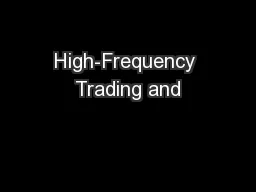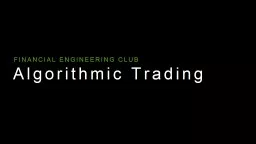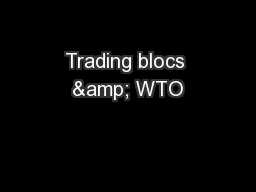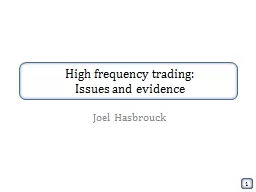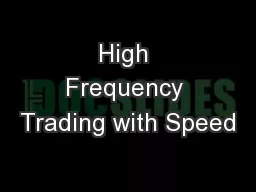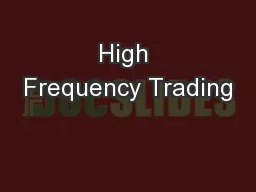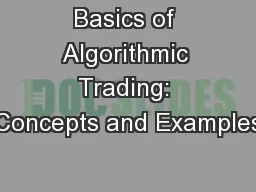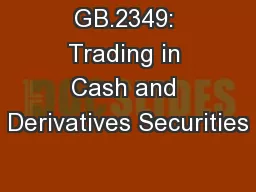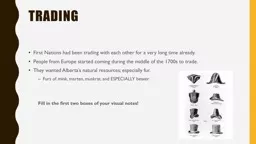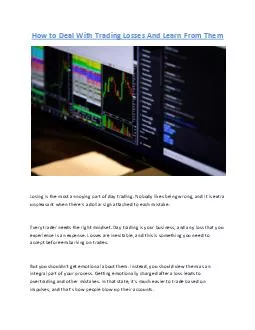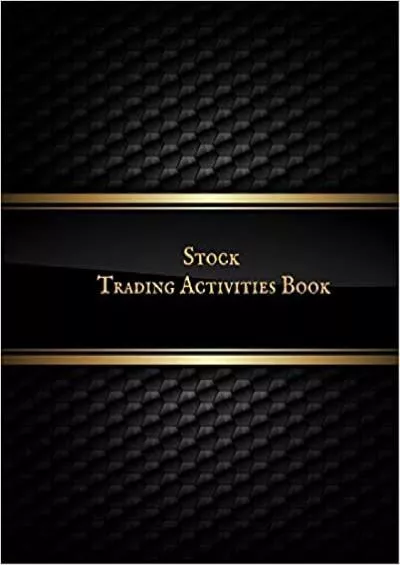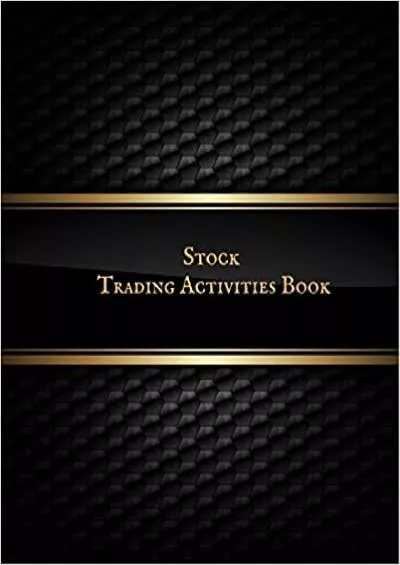PPT-High-Frequency Trading and
Author : ellena-manuel | Published Date : 2016-03-25
Price Discovery Terrence Hendershott Jonathan Brogaard Ryan Riordan Technology has been good for markets Is every use of technology good How do we think about
Presentation Embed Code
Download Presentation
Download Presentation The PPT/PDF document "High-Frequency Trading and" is the property of its rightful owner. Permission is granted to download and print the materials on this website for personal, non-commercial use only, and to display it on your personal computer provided you do not modify the materials and that you retain all copyright notices contained in the materials. By downloading content from our website, you accept the terms of this agreement.
High-Frequency Trading and: Transcript
Download Rules Of Document
"High-Frequency Trading and"The content belongs to its owner. You may download and print it for personal use, without modification, and keep all copyright notices. By downloading, you agree to these terms.
Related Documents

